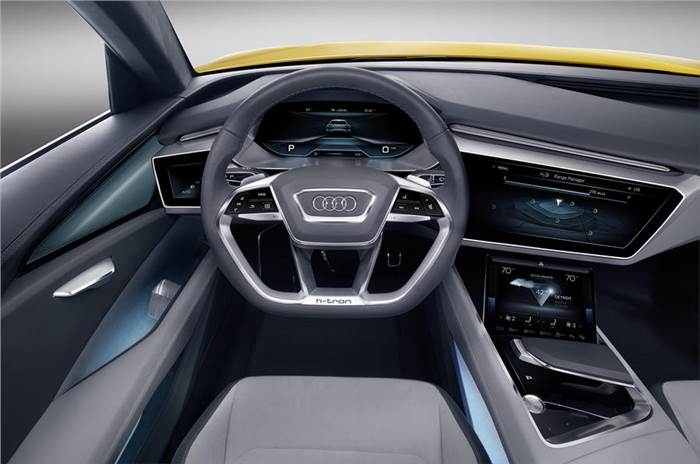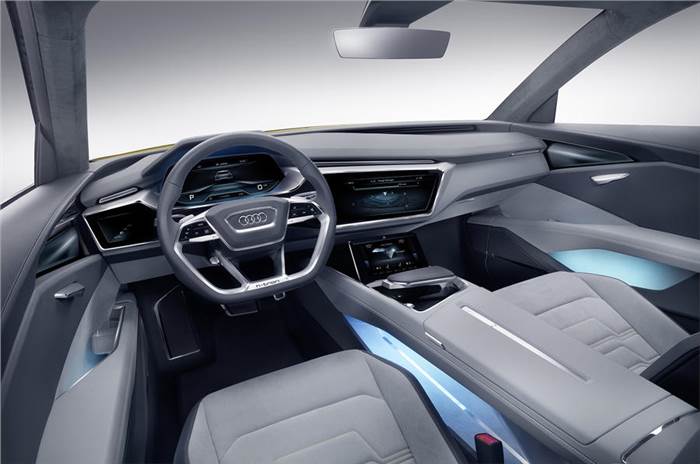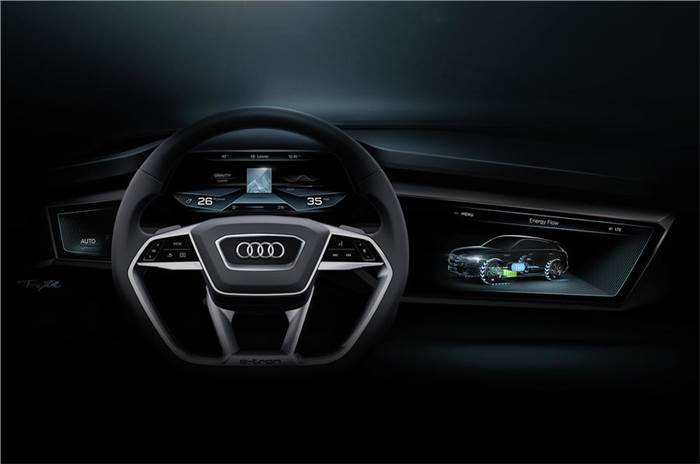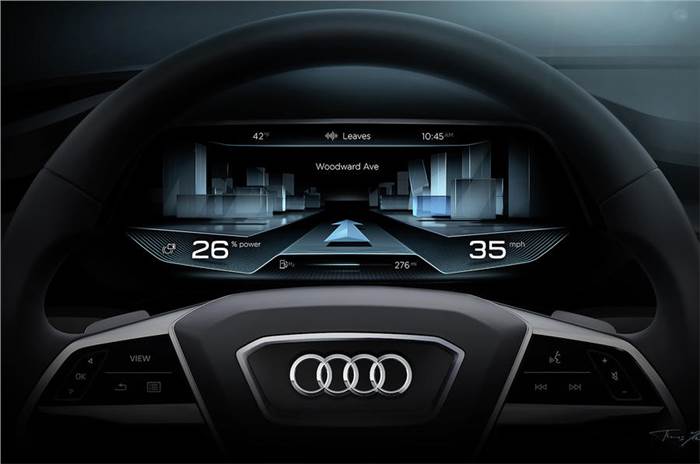Audi has revealed more details of the next evolution of its digital cockpit technology, elements of which are highly likely to reach production in the new Audi A8 next year.
The first screen, positioned in the driver’s direct field of vision and serving as the instrument panel, is a very thin, curved OLED (organic light emitting diode) screen that’s 14.1in diagonally across and has a 2240x720 pixel resolution. The slightly curved surface ensures that the driver can always read the displays without glare.
Controlled via the multifunction steering wheel, it is similar in function to Audi’s current virtual cockpit and in standard form it displays information such as speed, battery charge status and remaining electric range.
Additionally, virtual dashboard features two touch screens in the centre console. The upper screen shows regular infotainment content for controlling navigation and media functions, while the lower screen is used for text input and to operate the aircon. All of the key functions the driver may need are integrated into these two displays, which can be personalised.
The screens operations use haptic feedback, where the user hears a noise and feels a vibration whenever they press a button. Audi electronics expert Andreas Lamprecht said this provides two key benefits over traditional touchscreens: “First, the user avoids inadvertent operation such as that which might occur as they are travelling down a bumpy road and trying to use a function.
“Second, you can feel in your fingertip if the button has worked, so there’s no need to repeatedly prod the screen, so it is less distracting.”
Unlike current Audi models, there is no rotary control knob to operate the screens’ functions. “The reason is that everyone has smart phones and is familiar with touchscreens, and we want to react to that,” said Lamprecht.
“The general philosophy of the split screens and the haptic feedback systems will be in production cars in less than one year. It really is just around the corner,” he added.
Although he wouldn’t be drawn on which model would get the technology first, Lamprecht confirmed that “Obviously it is a technology that will start in our big cars and work down through the range.” With the next A8 due to launch in 2017, it makes sense that it will be first to receive the technology.
To start with, the system will use standard LED and LCD screens as opposed to the OLEDs featured on the concept.
“The OLED technology will not be coming yet,” said Lamprecht. “The temperature resistance and lifecycle of the screens are not yet at Audi’s standards. It will take a couple of years.”
The fully digital implementation of the new dashboard will lay a foundation for a system that will eventually be capable of learning about the use patterns of individual customers and personalising the car’s functions around them.






Comments
Member Login
Personal Details
No comments yet. Be the first to comment.